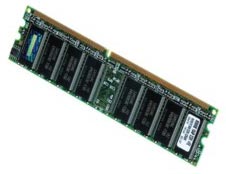 Intel and STMicroelectronics Collaborate on New Memory Technology
Intel and STMicroelectronics Collaborate on New Memory Technology
Chip manufacturers Intel and STMicroelectronics are currently collaborating to develop a new type of memory that could potentially replace flash memory and DRAM.
The duo plans to jointly announce documentation regarding Phase Change Memory (PCM), also known as PRAM and Ovonic Unified Memory, at the upcoming VLSI technology workshop at the end of this month.
In addition to PCM, Intel and STMicroelectronics are collaborating in several areas, including NOR flash memory. However, in the field of PCM, the two companies are conducting independent research. ST has successfully produced a prototype of 128Mbit PCM using a 90-nanometer technology process and is aiming to manufacture higher-speed PCM using 45 or 32-nanometer technology.
In their PCM documentation, Intel and ST are expected to share what they consider promising results using the 90-nanometer technology.
PCM is a type of non-volatile memory, which means that data will be retained even when the power is turned off. PCM operates based on a variety of chalcogenides—a type of memory material that can be structurally altered by heat generated from a tightly controlled electrical source.
The heat can transform the chalcogenide material into a crystalline form or an amorphous state. Each state of this material corresponds to a distinct charge storage state—essentially representing the binary digits “0 and 1,” where the amorphous state represents 1 and the crystalline form represents 0.
Chalcogenides have been used in rewritable optical discs, where laser light replaces electricity to create different states of the material.
This type of material has been known since the 1960s. However, commercial production has faced significant hurdles due to issues such as material quality and energy consumption.
Both Intel and ST are highly interested in PCM, as it could serve as a viable memory technology to replace traditional flash and DRAM chip architectures.
Hoàng Dũng


















































